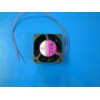Shopping Cart
0 item(s) - R0.00-
- - Amplifier Module
- - Arduino Compatible - Development Platform
- - Arduino Compatible Modules & Shields
- - Breakout Boards
- - Cables / Hookup wires
- - Displays
- - Enclosures
- - Magnets
- - Motors & Gears
- - Nuts & Bolts
- - Peltier Cooler Heater
- - PIR
- - Sensors
- - Servo's & Motors
- - Solar
- - Stand Alone Modules
- - Stepper Motor & Drivers
- - USB Programmers & Converters
- - Voltage Regulator & Chargers
- - RC Hobby Parts
-
- - AC DC Cooling Fans
- - Cable Ties
- - Day/Night Switches
- - Electrical Plugs & Connectors
- - Gate Remotes & Receivers (Universal)
- - Heat Shrink Sleeves
- - Insulation Tape
- - Lighting & Globes
- - Mains Power Cables
- - Power Supplies & AC/DC Adaptors
- - Security Lights LED Type
- - Solar Charge Controllers
- - Surge Protectors
- - Timers
-
- - Battery Holders
- - Breadboard
- - Bridge Rectifier
- - Buzzers
- - Capacitors
- - Crystals
- - Diodes
- - Electromechanical
- - Fuses
- - Headers
- - Heat Sinks
- - IC Sockets HQ
- - IC Sockets TIN
- - IC's --> Semiconductor
- - Inductors
- - Laser Units (CD Players)
- - Microcontrollers & CPU's
- - Opto Electronics
- - Panel Meters And Displays
- - Passive Components
- - Pilot Lamps & Fittings
- - Plugs & Sockets
- - Resistors
- - Rotary Potentiometer
- - Semiconductors
- - Sensors
- - Switches
- - Transformers
- - TVS Diodes
- - Veroboard / Stripboard
- - Voltage Regulators
- - Zener Diode
AC DC Cooling Fans
Voltage of AC and DC Cooling Fans
In general, AC cooling fans have motors that use higher voltage than DC cooling fans, so the AC models are often used to produce high pressure air currents in systems that will not malfunction because of the fan’s electromagnetic interference. Most DC cooling fans operate at low voltage. You can generally find 5V, 12V and 24V versions; and in larger sizes, from 119mm to 172mm, in 48V. In comparison, 115V is one of the most common AC cooling fan models.
Uses of AC and DC Cooling Fans
All types of computer equipment rely on DC cooling fans to prevent them from overheating. This includes everything from large servers to home PCs. The advantage of DC cooling fans is that they create less electromagnetic interference. This enables them to cool computer systems without disturbing processes with electromagnetic interference.
When choosing DC cooling fans for your computer, you might find that some of them are rated as 48VDC instead of 5V, 12V, or 24V. This is perfectly normal. VCD is simply another way of stating the amount of voltage that the fan uses. While the DC and VCD differentiation makes no difference, you should be certain to choose brushless models for your computer cooling needs.
Installing AC and DC Cooling Fans
Always use caution when installing AC or DC cooling fans. It is best to make sure that any equipment is unplugged before attempting to install fans. Both DC and AC currents can cause serious damage to humans when delivered in powerful doses. Even though most modern home electrical systems will not deliver a deadly jolt, a slight slip could still cause significant pain or even tissue damage.
Refine Search
Ex Vat: R34.35
Ex Vat: R34.78
Ex Vat: R43.48









-80x80.jpg)















